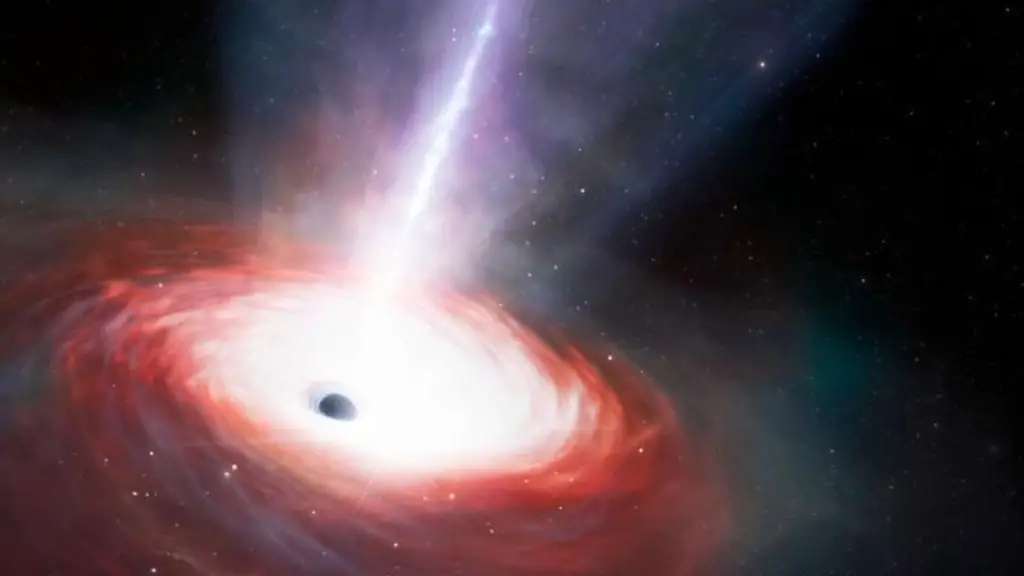Astronomers have discovered a cosmic monster devouring surrounding material at an extremely high rate in the early universe. A monstrous black hole lurks at the center of most galaxies. They pull in vast amounts of gas and dust, forming a swirling disk of matter.
The data from the James Webb Space Telescope (JWST) and Chandra X-ray Observatory helped identify this “fastest-feeding black hole” dubbed LID-568.
This black hole, seen just 1.5 billion years after the Big Bang, is growing at an astonishing rate. Surprisingly, it seems to be devouring matter at 40 times its normal limit.
This has left astronomers with a perplexing question: How do they grow so quickly, especially in the early Universe?


Using Webb for discovering the black hole
To uncover the secrets of LID-568, astronomers used Webb’s NIRSpec instrument. JWST’s powerful infrared vision allowed them to peer through cosmic dust and observe this distant, hungry black hole.
“Owing to its faint nature, the detection of LID-568 would be impossible without JWST. Using the integral field spectrograph was innovative and necessary for getting our observation,” said Emanuele Farina, International Gemini Observatory/NSF NOIRLab astronomer and co-author of the paper.
JWST’s NIRSpec enabled a full-field observation of the target and surrounding environment. This pointed towards powerful gaseous outflows surrounding the black hole.
The observed speed and extent of the outflows indicated that a significant portion of LID-568’s mass accretion may have taken place during a singular, rapid event.
“This serendipitous result added a new dimension to our understanding of the system and opened up exciting avenues for investigation,” said Hyewon Suh, the astronomer, who led this study.
Feeding frenzy
Surprisingly, the data suggest that this black hole is feeding matter at a rate 40 times its Eddington limit, a theoretical maximum rate.
“This black hole is having a feast,” said Julia Scharwächter, International Gemini Observatory/NSF NOIRLab astronomer and co-author.
“This extreme case shows that a fast-feeding mechanism above the Eddington limit is one of the possible explanations for why we see these very heavy black holes so early in the Universe,” Scharwächter added in the press release.
Supermassive black holes are thought to originate from smaller “seed” black holes. These seeds can form in two ways. First, light seeds, form from the collapse of massive stars at the end of their lives. Second, heavy seeds form from the direct collapse of massive gas clouds.
However, until now, scientists haven’t had concrete evidence to support either theory.
“The discovery of a super-Eddington accreting black hole suggests that a significant portion of mass growth can occur during a single episode of rapid feeding, regardless of whether the black hole originated from a light or heavy seed,” explained Suh.
The discovery of LID-568 has revealed that black holes can exceed their theoretical limits of growth.
The team discovered that LID-568 is surrounded by powerful outflows of gas, which may be helping to regulate its extreme growth. These outflows could be acting as a safety valve, releasing excess energy and preventing the black hole from becoming unstable.
To better understand this phenomenon, scientists will conduct further observations using the JWST.
The findings were published in the journal Nature Astronomy.


Leave a Comment